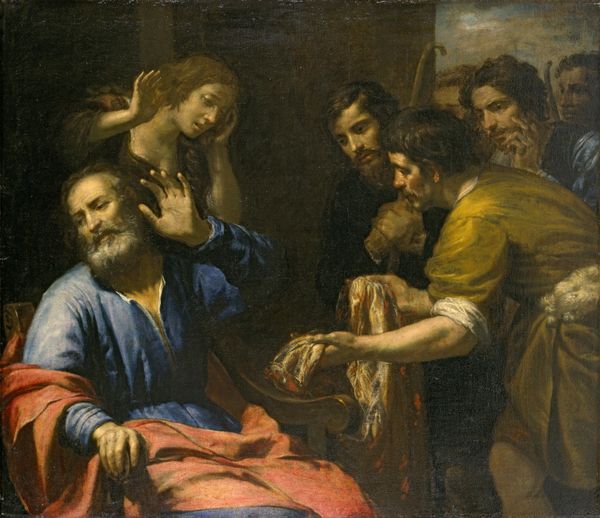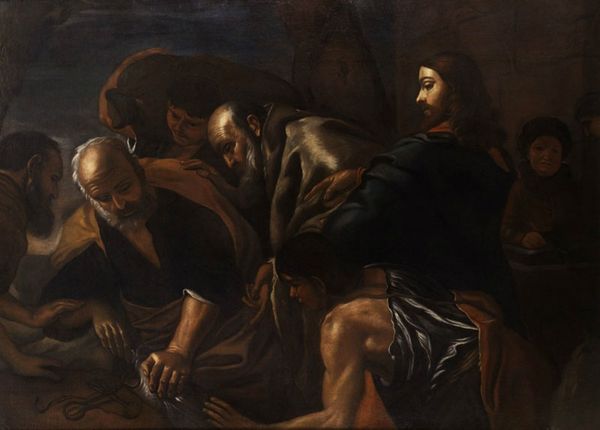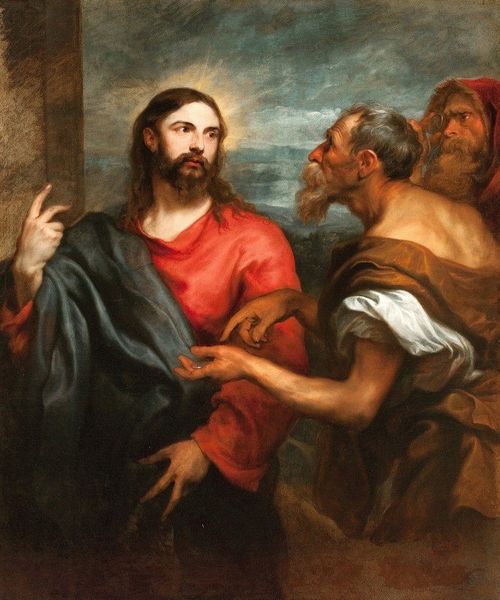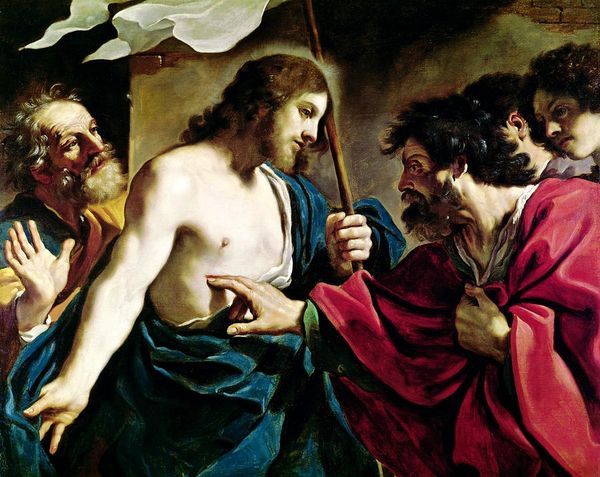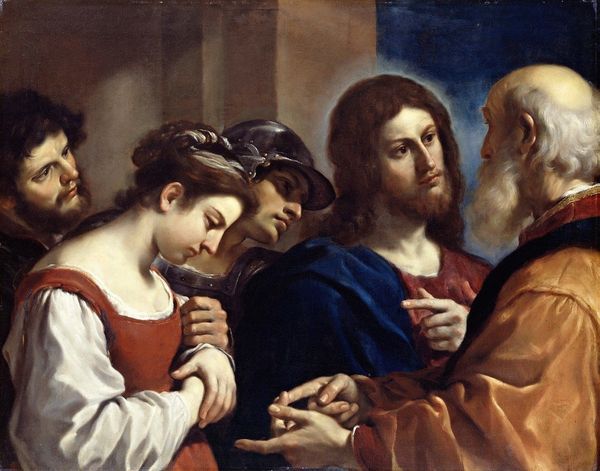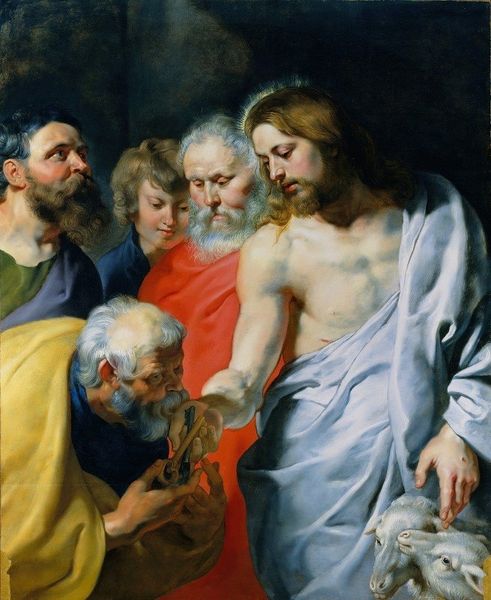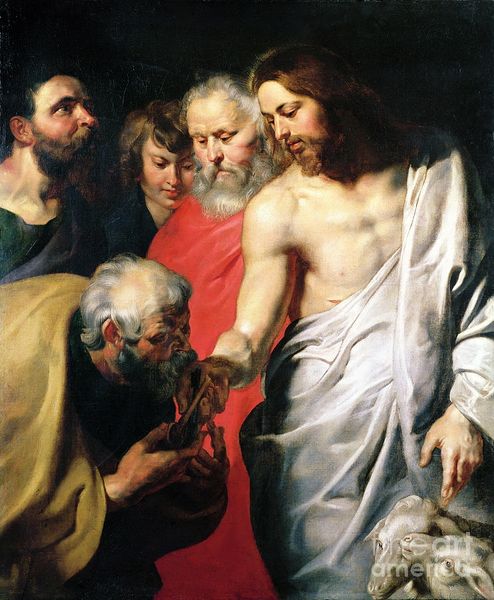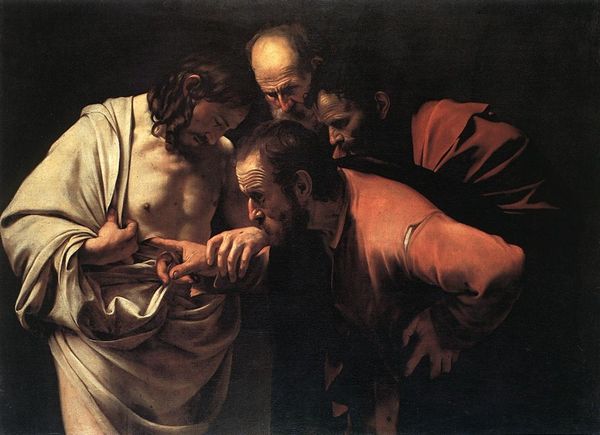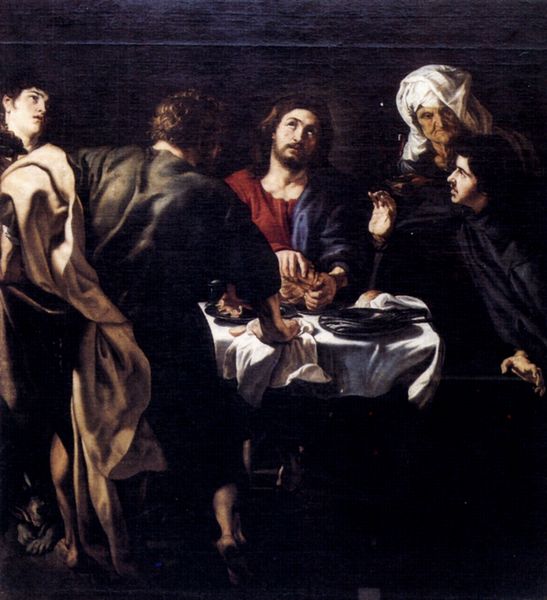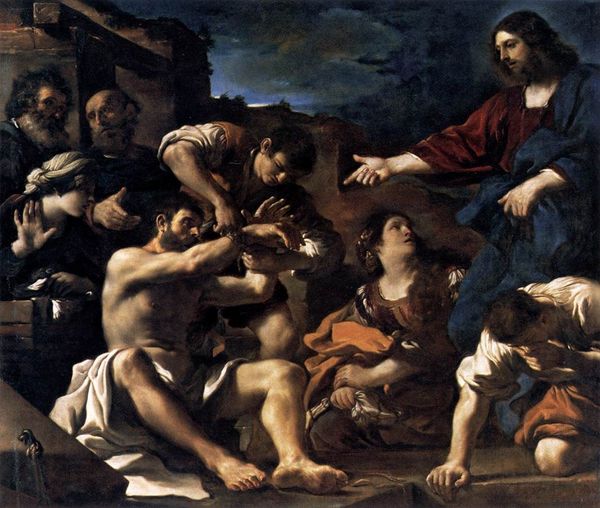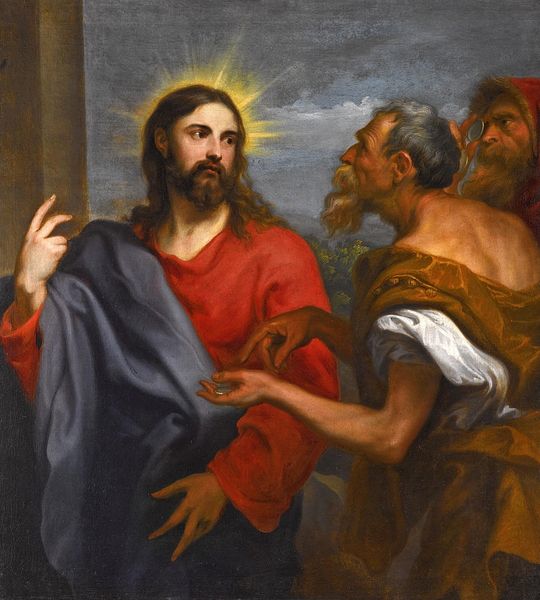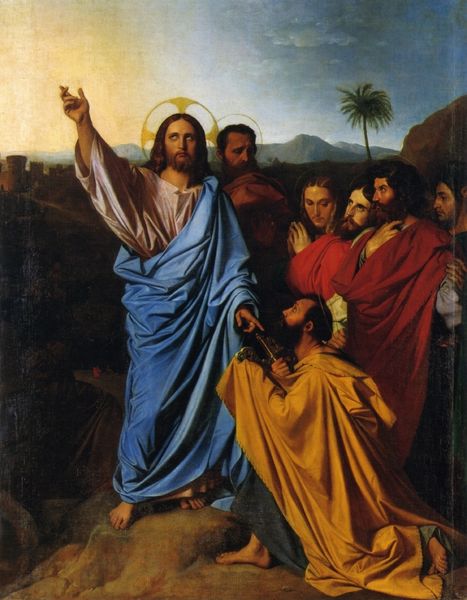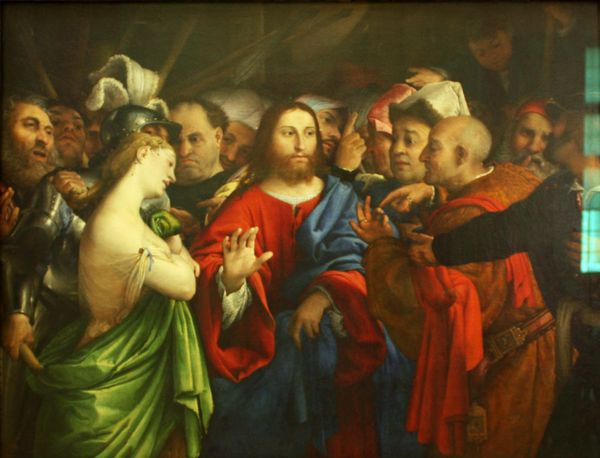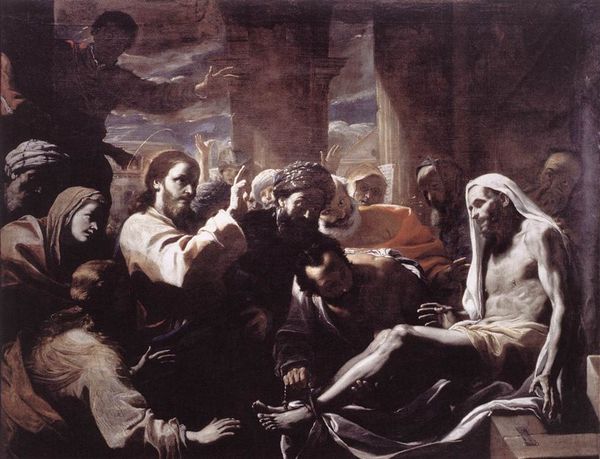
Dimensions: 153.67 x 128.27 cm
Copyright: Public domain
Editor: So, here we have John Singleton Copley’s "The Tribute Money," created in 1782. It's an oil painting currently housed at the Royal Academy of Arts. My first impression is how theatrical the gestures are, everyone seems to be making a point. What symbols and visual cues stand out to you in this piece? Curator: Immediately, I see a study in contrasts. Consider the figure of Christ, illuminated and serene, juxtaposed with the shadowed, gesticulating figures surrounding him. Their faces reflect suspicion, greed, perhaps even fear. Look closer. What object is at the center of this exchange? Editor: A coin, I think. Someone is pointing to it. Curator: Precisely. Money, in this context, becomes a powerful symbol of earthly versus spiritual authority. Copley, an American artist working in London, uses this biblical narrative to explore complex themes of allegiance and identity, even rebellion against earthly dominion. Do you recognize anything in Christ's gesture? Editor: It's pointing upwards. It's interesting that his direction contrasts with the focus on money. He doesn't seem that interested. Curator: Exactly! This pointing may signify something. In the language of Christian iconography, Christ's raised finger carries multiple layers of meaning – divine authority, spiritual truth, and a turning towards the heavenly realm. We should also consider, what memories, and historical forces are reflected in the depiction of such a subject? Editor: So, the painting's not just about a single biblical moment, it's about a larger historical and spiritual tension. I never thought about how many layers are interwoven through simple gestures and contrasting light. Curator: Precisely. Copley gives us much to consider with this work!
Comments
No comments
Be the first to comment and join the conversation on the ultimate creative platform.
